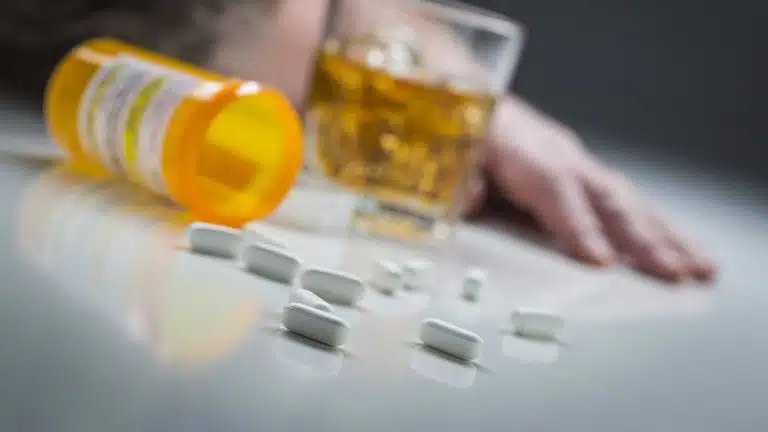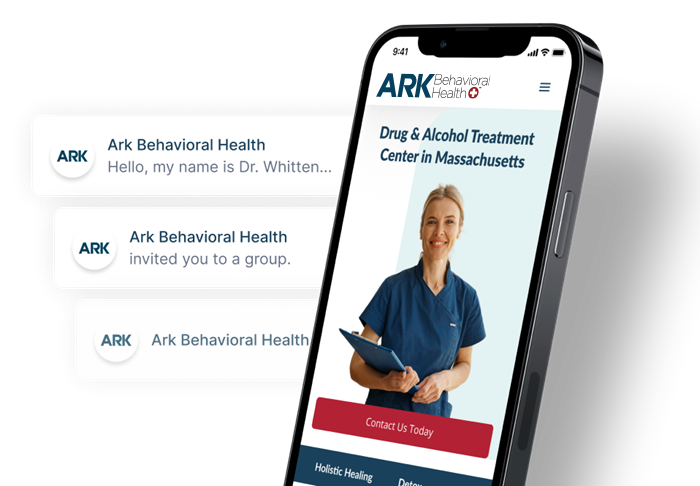Dangers Of Mixing Alcohol & Prescription Opioids

One of the most popular and dangerous drug combinations is alcohol and opioids. Opioids (also called opiates) are powerful painkillers that, like alcohol, can make you feel happy and relaxed.
Some people mix alcohol with illegal opioid heroin. Others mix it with prescription opioids like oxycodone (OxyContin), hydrocodone (Vicodin), and fentanyl. In either case, mixing alcohol and opioids poses serious side effects and health risks.
Effects Of Mixing Alcohol & Opioids
Both alcohol and opioids are central nervous system depressants. That means they slow down your brain activity, which can cause relaxation and euphoria (intense joy). Most people mix alcohol and opioids to enhance these positive effects.
Unfortunately, mixing the drugs also enhances their negative effects, which include:
- headache
- confusion
- trouble concentrating
- memory problems
- dizziness
- loss of coordination
- dry mouth
- slurred speech
Not everyone who mixes alcohol and opioids knows they’re abusing drugs.
Some people who take prescription opioids have a glass of wine or two without realizing the risks. That’s why it’s important to ask your doctor or healthcare provider if alcohol interacts negatively with any prescription medications you take.
Dangers Of Mixing Alcohol & Opioids
The negative effects of alcohol consumption and opioid use can take a serious toll on your health. For example, the loss of coordination and trouble concentrating may lead to falls, drownings, car crashes, and other accidents.
Also, both alcohol and opioids slow down not only your brain activity but also your breathing and heart rate.
Thus, when you mix the drugs, your breathing and heart rate may slow to a dangerous degree and deprive your body of oxygen. You may then experience coma, brain damage, or death.
Health Problems
You might also develop some of the numerous health problems associated with alcohol abuse. These problems include:
- high blood pressure, heart disease, and stroke
- liver disease
- cancer of the breast, mouth, throat, esophagus, voice box, liver, colon, and rectum
- depression and anxiety
- learning and memory problems
- risky sexual behaviors, including unprotected sex or sex with multiple partners
- violence, including sexual assault and homicide
- miscarriage, stillbirth, or fetal alcohol spectrum disorders (FASDs)
You face a higher risk of these issues if you engage in binge drinking or heavy alcohol use. Binge drinking means:
- having 4 or more drinks in about 2 hours if you’re a woman
- having 5 or more drinks in about 2 hours if you’re a man
Heavy alcohol use means:
- having more than 7 drinks per week or more than 3 drinks in one day if you’re a woman
- having more than 14 drinks per week or more than 4 drinks in one day if you’re a man
In addition, no matter how much you drink, mixing alcohol and opioids increases your risk of overdose and addiction.
Overdose
An overdose occurs when you use enough of a drug (or drugs) to cause life-threatening effects. Common signs of alcohol and opioid overdose include:
- nausea and vomiting
- confusion
- limpness
- pale, clammy skin
- bluish lips and/or fingernails
- respiratory depression (shallow, difficult breathing)
- slowed or stopped heartbeat
- seizures
- loss of consciousness
When left untreated, an overdose can be fatal. If you or someone you love experiences these symptoms, call 911 immediately.
In most cases, first responders will administer a medication called naloxone (brand name Narcan) to treat the effects of opioid overdose. To treat the effects of alcohol overdose, they may administer treatments such as:
- stomach pumping to rid the body of alcohol
- oxygen therapy to treat breathing problems
- IV fluids to treat dehydration, low blood sugar, and vitamin deficiencies
Addiction
Over time, mixing alcohol and opioids can lead to alcohol addiction (alcohol use disorder) and opioid addiction (opioid use disorder). These diseases make you feel unable to control your use of alcohol and opioids.
The two most common symptoms of addiction are tolerance and physical dependence.
Tolerance means you need an increasingly larger amount of alcohol or opioids to feel the desired effects. Physical dependence means you feel unable to function normally without alcohol or opioids. When you don’t use them, you may experience withdrawal symptoms such as:
- anxiety
- irritability
- shaking
- sweating
- headache
- muscle aches
- nausea and vomiting
- trouble sleeping
Other symptoms of alcohol and opioid addiction include:
- frequently craving alcohol and opioids
- withdrawing from friends and family members
- losing interest in activities once enjoyed
- losing motivation at work or school
- appearance changes, such as bloodshot eyes, weight loss or gain, or decline in personal hygiene
It’s not easy or safe to try beating a drug addiction on your own. Luckily, many substance abuse treatment centers specialize in both alcohol addiction and opioid addiction.
If you or a loved one struggles with alcohol and opioids, please contact an Ark Behavioral Health specialist. Our drug abuse and addiction treatment programs offer medical detox, mental health counseling, and other evidence-based treatments to help you lead a healthy, fulfilling life.
Related Topics
What Happens When You Drink Alcohol On Dilaudid?
Combining alcohol and Dilaudid can cause severe respiratory depression, coma, and even death.
Both alcohol and Dilaudid slow down the central nervous system (CNS). Because of this, heavy sedation can occur, potentially causing you to experience slowed breathing, a slow heart rate, and brain damage.
Learn more about Mixing Dilaudid & Alcohol
What Happens When You Mix Alcohol With Oxycodone?
When someone combines alcohol and oxycodone, they can experience life-threatening symptoms.
Alcohol depresses the central nervous system (CNS) while oxycodone can cause extreme sedation and slowed breathing. Mixing them can lead to an increased risk of developing respiratory depression which can cause brain damage and lead to death.
Learn more about Mixing Alcohol & Oxycodone
Is It Safe To Mix Hydrocodone & Alcohol?
Hydrocodone is an opioid prescription pain reliever and a central nervous system (CNS) depressant. It is not safe to mix opioids with alcohol, which is also a CNS depressant. Mixing both substances can worsen side-effects, including drowsiness and dizziness.
In addition, mixing alcohol and opioids can cause a life-threatening overdose.
Learn more about Mixing Hydrocodone & Alcohol
What Happens When You Mix Alcohol With Oxymorphone?
Mixing alcohol with oxymorphone can lead to sedation, respiratory depression, impairment, coma, and death. It can also be a sign of long-term substance use and alcohol use disorders.
Learn more about Mixing Alcohol & Opana
What Happens When You Mix Codeine & Alcohol?
Both codeine and alcohol are central nervous system (CNS) depressants. When you mix them, you enhance their pleasant effects, namely relaxation and happiness. However, you also enhance their unpleasant effects, such as nausea, loss of motor control, and poor judgment.
In some cases, mixing codeine and alcohol can also cause severe health problems, including respiratory depression, liver damage, addiction, and overdose.
Learn more about Mixing Codeine & Alcohol
What Happens When You Mix Suboxone & Alcohol?
Because Suboxone and alcohol are both central nervous system (CNS) depressants, mixing them can slow down your central nervous system to a dangerous degree. You may experience problems such as:
- extreme drowsiness
- confusion
- memory problems
- impaired motor control
- alcohol poisoning, which can be fatal
In addition, mixing Suboxone and alcohol increases your risk of both opioid use disorder and alcohol use disorder.
Learn more about Mixing Suboxone & Alcohol
What Happens When You Mix Tramadol With Alcohol?
Both tramadol and alcohol are central nervous system depressants. When taken together, both substances will reduce CNS activity more than either substance alone, potentially leading to overdose, respiratory depression, and death.
Long-term, drinking alcohol and taking tramadol together increases a person’s risk of lasting physical and mental harm as well as the severity of substance dependence and addiction.
Learn more about Mixing Alcohol & Tramadol
Written by Ark Behavioral Health Editorial Team
©2024 Ark National Holdings, LLC. | All Rights Reserved.
This page does not provide medical advice.
Centers for Disease Control and Prevention - Drinking too much alcohol can harm your health
National Institute on Alcohol Abuse and Alcoholism - Drinking Levels Defined
National Institute on Alcohol Abuse and Alcoholism - Understanding the Dangers of Alcohol Overdose
National Institute on Drug Abuse - Prescription CNS Depressants DrugFacts
United States National Library of Medicine - Opioid Overdose

Questions About Treatment?
Ark Behavioral Health offers 100% confidential substance abuse assessment and treatment placement tailored to your individual needs. Achieve long-term recovery.
100% confidential. We respect your privacy.
Prefer Texting?
Our friendly support team is here to chat 24/7. Opt out any time.







 Learn More
Learn More








